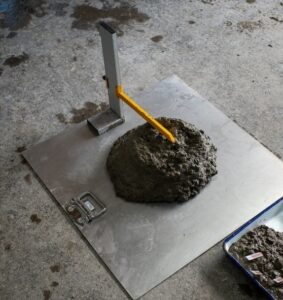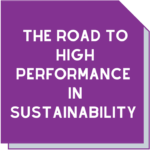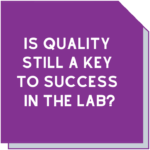How sustainability, testing and quality align to support our future infrastructure
We believe in seeking out information and ideas that will support your business to be better and smarter. Different perspectives on quality and business practices may provoke conversations in your workplace. This could lead to new and better ways of doing things. Paul Davies, Principal of Think Sustainability shares his thoughts on how sustainability, testing and quality combine to deliver best practice infrastructure projects.
We are in the midst of Australia’s most significant and protracted infrastructure boom of the 21st Century. And it shows no sign of slowing down, fuelled by economic recovery, changing demographics and the impacts of the pandemic. And of course, the ever-present elections cycle.
Every week new infrastructure projects are announced, and both urban and rural populations argue that more is needed. In my home city of Sydney, recent projections of future population growth particularly in Sydney’s west highlight an urgent need for future transport and other infrastructure that will support growth in the order of hundreds of thousands in the coming decades.
To support this growth, energy infrastructure is also changing and expanding, particularly around renewables. Solar, wind, and hydrogen plants are on the drawing boards across Australia. This will enable a welcome reduction in our reliance on fossil fuels.
Built to last
 Infrastructure has a unique set of characteristics that distinguish it from other things humans create. It has longevity, scale, impact, and functionality that other types of structures don’t.
Infrastructure has a unique set of characteristics that distinguish it from other things humans create. It has longevity, scale, impact, and functionality that other types of structures don’t.
Rail lines can expect to operate for 120+ years – airports, bridges, roads and other utilities somewhat less. Current transport projects can be massive in scale including $8 billion rail projects. These involve multiple stations, tunnels, bridges, maintenance, and stabling facilities. Plus there’s the associated rolling stock covering tens of kilometres.
In terms of impacts, infrastructure during its lifecycle can consume massive quantities of materials, energy, and water. It also releases tonnes of greenhouse gas emissions and waste into the environment. And, from a functionality point of view, infrastructure is subject to ongoing intensive maintenance from its day-to-day operations, from environment impacts, and from keeping up with changing user demands.
We don’t build infrastructure the way we used to in the 19th and 20th centuries. The brute force, labour intensive, protracted delivery approach of the past is no longer either viable or acceptable.
Today we look to be as efficient and cost-effective as possible to meet tight deadlines and even tighter budgets. We also now have strict engineering, quality, environmental, health and safety standards that allow little tolerance of deviation. Plus there’s a myriad of expectations from a multitude of stakeholders that must be satisfied in the delivery and operation phases. Talk about stress!
It is in this environment that sustainability, quality, and testing come together to help provide solutions and deliver the goods.
Sustainable infrastructure solutions
One key area that exemplifies this is the role these three areas play in supporting innovation in infrastructure design and delivery. This is particularly the case for the materials and construction aspects.
New materials are constantly being introduced into today’s infrastructure delivery process. Some of the most desired attributes for these new materials are ‘less is more’, durability, low carbon content, high recycled content, and environmental friendliness. Reducing the amount of materials (both consumed and wasted) has both cost, quality, time, and sustainability benefits. One example of this is the ‘kit of parts’ approach now seen on many projects.
There is low carbon concrete, recycled steel and asphalt, rail sleepers and noise walls made from plastic waste, sand from quarry by products. These all are becoming more common and more accepted across infrastructure projects.
But materials innovation still requires the same testing and quality considerations as traditional construction materials, and probably even more.
An increased role for testing
 New materials must be demonstrably fit for purpose and durable, particularly given the longevity of infrastructure and the predicted impacts of a changing climate. So, their acceptability and useability on projects is highly dependent on demonstrating these qualities through rigorous testing in development and ongoing quality control in production.
New materials must be demonstrably fit for purpose and durable, particularly given the longevity of infrastructure and the predicted impacts of a changing climate. So, their acceptability and useability on projects is highly dependent on demonstrating these qualities through rigorous testing in development and ongoing quality control in production.
Some promising materials are still not there, even though their use has the potential to significantly reduce costs, waste, and maintenance. But those that have crossed the acceptance line are being picked up in the sector in significant volumes and demonstrating their suitability across a wide variety of infrastructure.
Sustainability is increasingly being welded into infrastructure delivery and operation contracts by state agencies and other proponents. Demonstrating sustainable outcomes in infrastructure projects and operating assets relies heavily on testing and quality control.
Testing plays an important role in monitoring not just the materials used, but environmental impacts. These include site contamination, water discharges, air emissions, noise and light pollution, plant and rolling stock GHG emissions, and other direct and indirect externalities. These impacts add up over the extended lifecycle of infrastructure from delivery through to decommissioning. This is why their reliable measurement and monitoring is crucial.
Risk reduction
In terms of the dependence of infrastructure sustainability on quality control, the suitability and durability of components and materials is crucial to reducing maintenance, increasing reliability, managing costs and meeting customer and community expectations.
New materials and new ways of building, desirable from a sustainability perspective, add uncertainty to the mix. Designers and engineers are rightly conservative around risk and are reluctant to approve or apply new approaches where the risk cannot be quantified through testing and quality assurance.
Chain of custody and quality assurance are also key considerations for some materials that are highly desirable for infrastructure from a sustainability perspective, such as sustainably sourced timber, natural stone, and textiles.
Increased transparency
A sound quality management system can also help infrastructure address one the of most important social and ethical sustainability issues of our time, that of modern slavery.
Infrastructure supply chains are both long, complex, and tortuous, often stretching into countries that are known to have a high risk of slavery practices. It is still uncomfortably easy for some suppliers, that are several tiers down the chain, to engage in these practices without the construction contractor having any visibility.
Good quality management can embed supplier screening practices. Audits, third-party certifications and other mechanisms lessen the likelihood of these practices going undiscovered.
Supporting infrastructure best practice
Here in Australia, we are fortunate to have key professional bodies that underpin best practice in infrastructure operation and delivery. By enhancing industry approaches that advance sustainability, they ensure the reliability of the testing and measurement carried out. Plus, these bodies disseminate good quality control and assurance practices.
These include the Infrastructure Sustainability Council (ISC) which independently rates the sustainability performance of infrastructure projects and assets. In the testing space, we have the National Association of Testing Authorities (NATA), one of the world’s premier laboratory accreditation bodies. And completing the triumvirate, the Australian Organisation for Quality Ltd (AOQ) focusses on expanding and enhancing quality practices across the Australian business landscape.
Although these bodies function independently, their remits all impact the infrastructure sector in a positive, purposeful way.
The final word
We have come a long way in how we approach the building and operation of infrastructure. However, we still have a long way to go in doing things in a truly sustainable way. Yet we are making significant progress – what was innovation five years ago has now become business as usual.
But we can only measure this progress and maintain its momentum by supporting sustainable approaches with good testing practices and sound quality management. If we don’t, then the credibility of the claims we make around better, more sustainable infrastructure comes under increasing scrutiny and potentially undermines the gains we have made in recent years.
Want to know more about about implementing sustainable business practices? Email paul@thinksustainability.com.au or visit his website Think Sustainability
And as always, we’re here to support your business. Call Maree (0411 540 709), Diane (0402 012 781) or email info@masmanagementsystems.com.au and let’s discuss how we can help your journey to better and smarter.
Remember, you don’t have to do this alone!
Download the article How sustainability infrastructure and testing align






